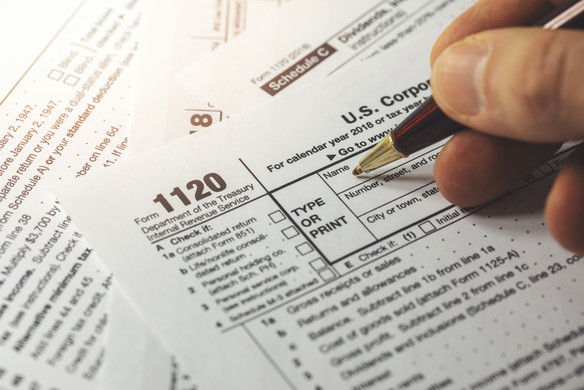This article was contributed by Michael Cohn from Accounting Today
This article is for educational purposes and does not constitute legal, financial, or tax advice. For specific advice applicable to your business, please contact a professional.
The Internal Revenue Service and the Treasury Department issued final regulations Tuesday requiring companies to begin electronically filing certain kinds of returns and documents starting next year.
The final regulations will affect filers of partnership returns, corporate income tax returns, unrelated business income tax returns, withholding tax returns, certain information returns, registration statements, disclosure statements, notifications, actuarial reports, and certain excise tax returns. The new rules come in response to provisions of the Taxpayer First Act of 2019 that reduced the e-filing threshold.
The new final regulations will require certain filers to e-file beginning in 2024. Specifically, the final regulations reduce the 250-return threshold enacted in prior regulations to generally require e-filing by filers of 10 or more returns in a calendar year.
The final regulations also create several new regulations to require e-filing of certain returns and other documents not previously required to be e-filed.
The final rules also require filers to aggregate nearly all information return types covered by the regulation to determine whether a filer meets the 10-return threshold and is required to e-file their information returns. Earlier regulations applied the 250-return threshold separately to each type of information return covered by the regulations.
The final regulations also eliminate the e-filing exception for income tax returns of corporations that report total assets under $10 million at the end of their taxable year.
In addition, partnerships with more than 100 partners must now electronically file information returns, and partnerships that have to file at least 10 returns of any type during the calendar year need to e-file their partnership return.
To aid the process, the IRS created a new, free online portal last month to help businesses file Form 1099 series information returns electronically. Known as the Information Returns Intake System, or IRIS, the free e-file service will be secure and require no special software. While it’s available to any business of any size, IRIS can be particularly helpful to any small business that now sends their 1099 forms on paper to the IRS.
The IRS has been working to reduce the backlog of unprocessed paper tax returns and correspondence that built up during the pandemic and has been encouraging more taxpayers to file electronically whenever possible. As of Feb. 4, 2023, the IRS reported it had 1.84 million unprocessed individual returns, including tax year 2022 returns, 2021 returns that needed review or correction, and late-filed prior year returns. Of these, 1.73 million returns required error correction or other special handling, and 107,000 were paper returns waiting to be reviewed and processed.
In recent years the IRS has seen enormous growth in the availability and use of e-file services. In 2021, approximately 82% of all corporate income tax returns were e-filed, and nearly 90% of partnership tax returns were e-filed.
Reducing the volume of paper returns filed can free up staff and resources to improve services for taxpayers and improve overall efficiencies while decreasing postage, printing, shipping and storage and their costs and burdens.
The IRS receives nearly 4 billion information returns per year and expects to receive nearly 5 billion by 2028. In 2019, the IRS still received nearly 40 million paper information returns, even though approximately 99% of all information returns for that year were e-filed.
The final regulations generally provide waivers for filers that would experience hardship in complying with the e-filing requirements and administrative exemptions from the e-filing requirements to promote effective and efficient tax administration.
This article was written by Michael Cohn from Accounting Today and was legally licensed through the Industry Dive Content Marketplace. Please direct all licensing questions to [email protected].
![]()









